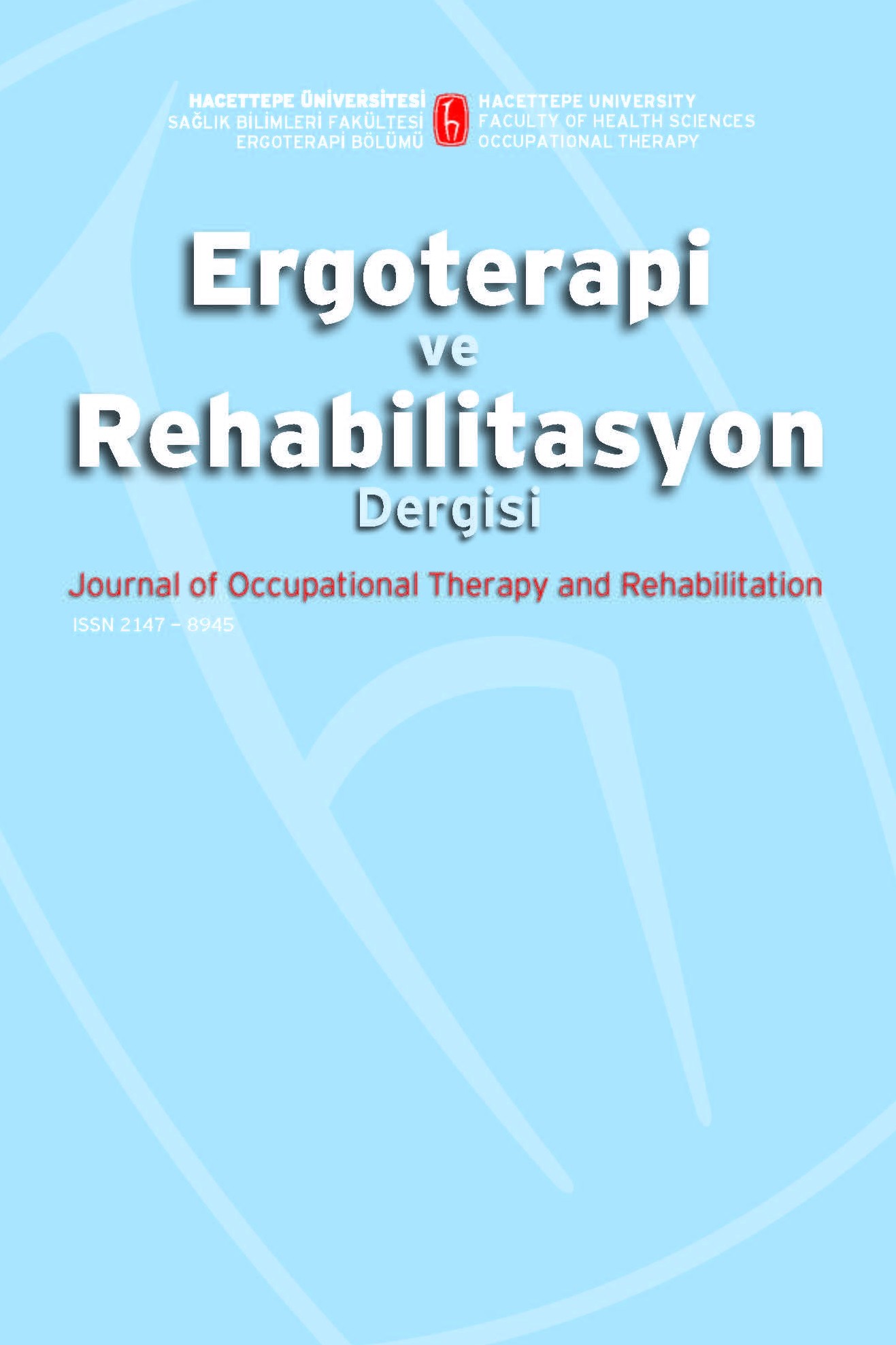Üniversite Öğrencilerinde Cep Telefonu Kullanımı İle Kimlik Gelişimi Arasındaki İlişki
Bağımlılık; Sosyal kimlik; Servisler; Toplum sağlığı; Eğitim
Relationship Between Mobile Phone Usage and Identity Development in University Students
___
- Arnett, J. J. (2004). Emerging adulthood: The winding road from the late teens through the early twenties.
- Augner, C., & Hacker, G. W. (2012). Associations between problematic mobile phone use and psychological parameters in young adults. International Journal of Public Health, 57(2), 437-441.
- Erikson, E. H. (1968). Identity youth and crisis, New York (WW Norton) 1968.
- Erikson, E. H. (1984). İnsanın Sekiz Çağı, Çev. TB Üstün, V Şar). Birey ve Toplum Yayıncılık, Ankara.
- Fırat, N., & Çelik, S. B. (2017). The adaptation of mobile phone addiction scale into turkish: Validity and reliability study cep telefonu bağımlılığı ölçeği (CBÖ)’nin Türkçe’ye uyarlanması: Geçerlik ve güvenirlik çalışması. Journal of Human Sciences, 14(3), 2875-2887.
- Kahyaoğlu-Süt, H., Kurt, S., Uzal, Ö., Özdilek, S. (2016). Sağlık bilimleri fakültesi öğrencilerinin akıllı telefon bağımlılık düzeylerinin sosyal ve eğitim hayatına etkisi. Avrasya Aile Hekimliği Dergisi, 5(1), 13-19.
- Karaaslan, İ. A., & Budak, L. (2012). Üniversite öğrencilerinin cep telefonu özelliklerini kullanımlarının ve gündelik iletişimlerine etkisinin araştırılması. Journal of Yasar University, 7(26).
- Kroger, J. (2004). Identity in adolescence: The balance between self and other. Psychology Press.
- Kroger, J. (2002a). Introduction: Identitiy development through adulthood. Identity: An International Journal of Theory and Research, 2, (1), 1-5.
- Kroger, J. (2002b). Identity processes and contents through the years of late adulthood. Identity: An International Journal of Theory and Research, 2 (1), 81-99.
- Kroger, J., Marcia, J. E., Whitbourne, S. K., Sneed, J. R., Skultety, K. M., Strayer, J., Kroger, J. & Raskin, P. M. (2002). Afterword. Identity: An International Journal of Theory and Research, 2(1), 109-113.
- Lepp, A. (2014). Exploring the relationship between cell phone use and leisure: an empirical analysis and implications for management. Managing Leisure, 19(6), 381-389.
- Luyckx, K., Schwartz, S. J., Berzonsky, M. D., Soenens, B., Vansteenkiste, M., Smits, I., & Goossens, L. (2008). Capturing ruminative exploration: Extending the four-dimensional model of identity formation in late adolescence. Journal of Research in Personality, 42(1), 58-82.
- Marcia, J. E., & Kroger, J. (1993). The relational roots of identity. Discussions on Ego Identity, 101-120.
- Marcia, J. E. (2002). Adolescence, identity, and the Bernardone family. Identity: An International Journal of Theory and Research, 2(3), 199-209.
- Marwick, A. E. (2008). Becoming Elite: Social Status in Web 2.0 Cultures. New York.
- Morsünbül, Ü. (2011). Ergenlikte özerkliğin ve kimlik biçimlenmesinin öznel iyi oluş üzerindeki etkisi. Yayımlanmamış Doktora Tezi. Ankara Üniversitesi, Eğitim Bilimleri Enstitüsü, Ankara.
- Pearson, C., & Hussain, Z. (2016). Smartphone addiction and associated psychological factors. Addicta: The Turkish Journal of Addictions.3, 193-207.
- Soni, R., Upadhyay, R., & Jain, M. (2017). Prevalence of smart phone addiction, sleep quality and associated behaviour problems in adolescents. International Journal of Research in Medical Sciences, 5(2), 515-519.
- Tekin, C., Gunes, G., & Colak, C. (2014). Adaptation of problematic mobile phone use scale to Turkish: A validity and reliability study. Medicine Science| International Medical Journal, 3(3), 1361-81.
- Thulin, E., & Vilhelmson, B. (2007). Mobiles everywhere: Youth, the mobile phone, and changes in everyday practice. Young, 15(3), 235-253.
- Townsend, A. M. (2000). Life in the real-time city: Mobile telephones and urban metabolism. Journal of urban technology, 7(2), 85-104.
- ISSN: 2147-8945
- Yayın Aralığı: Yılda 3 Sayı
- Başlangıç: 2013
- Yayıncı: Hacettepe Üniversitesi Sağlık Bilimleri Fakültesi
Esin Yalcınkaya AYAYDIN, Ersin SARİCAM
Görme Engelli Üniversite Öğrencilerinde Zaman Yönetimi Eğitiminin Aktivite Performansına Etkisi
İbrahim Yavuz TATLI, Gamze EKİCİ
Ergenlerde Anne-Baba Tutumunun Duygu Düzenleme ve İyilik Haline Etkisinin İncelenmesi
Sinem KARS, Özgür BEKTAŞ, Gökçen AKYÜREK
Ergoterapistlerin Kişiler Arası Modları Kullanımı: Terapötik Modlar
Orkun Tahir ARAN, Ceren DAVUTOĞLU, Ege TEMİZKAN, Sedef ŞAHİN, Sevginar VATAN
Total Kalça Artroplastisi Sonrası Yapay Ekleme Adapte Olabilmenin Belirleyicileri
Sibel BOZGEYİK, Yusuf TOPAL, Hande GÜNEY-DENİZ, Ömür ÇAĞLAR, Gizem İrem KINIKLI
Multipl Skleroz Hastalarında Algılanan Yorgunluğun Aktivite-Rol Yeterliliği ile İlişkisi
Serkan PEKÇETİN, Damla Ece IRMAK, Özgü İNAL, Hülya ÖZKAN, Sezgin KEHAYA, Hülya KAYIHAN
Üniversite Öğrencilerinde Cep Telefonu Kullanımı İle Kimlik Gelişimi Arasındaki İlişki
